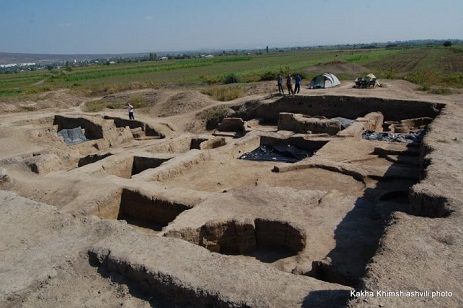8,000 year-old settlement unearthed in Georgia

An international team of archaeologists have unearthed an ancient living space dating back to the sixth millennium BC in Georgia’s southeast.
The Georgian National Museum together with the international expedition of Eurasian Department of Germany National Museum discovered the ancient dwelling and agricultural facilities in Nadikhuri village in the Bolnisi municipality.
Authorities said "interesting canals with strange shapes” were uncovered by the archaeologists but their function was still under question.
The experts noted stone and horn agricultural tools proved cattle breeding, workmanship and agriculture were well developed 6,000 years BC.
The expedition aimed to study the problems of creation and development of the productive economy of the Caucasian Neolithic culture and to define the period and chronological borders of the site.
The archaeological excavations were conducted by a scientific team and students from the Georgian National Museum together with honored guests from Romania, Bulgaria, Hungary and Poland. The head of expedition from the Georgian side was Professor Guram Mirtskhulava, while the German side was led by Professor Sven Hansen, first director of the Eurasia Department of German Archaeological Institute.
 Tweet
Tweet  Share
Share